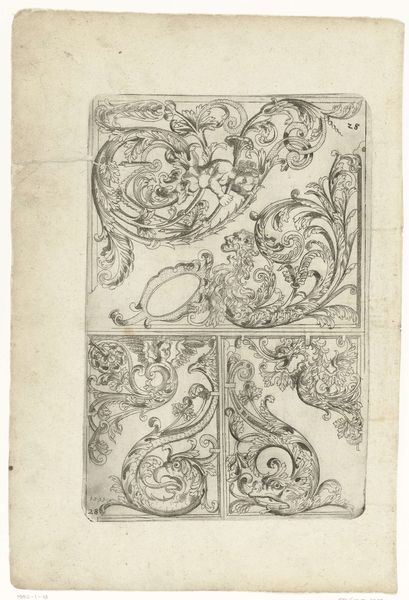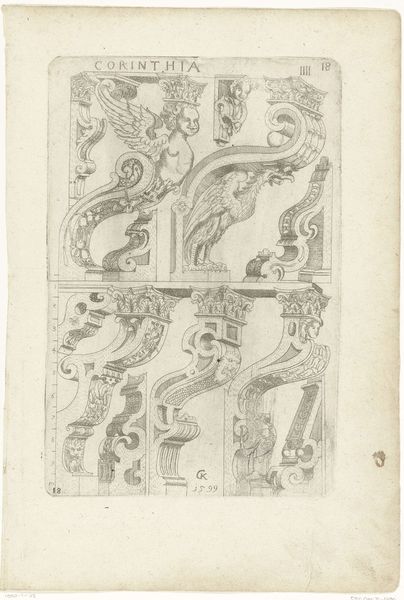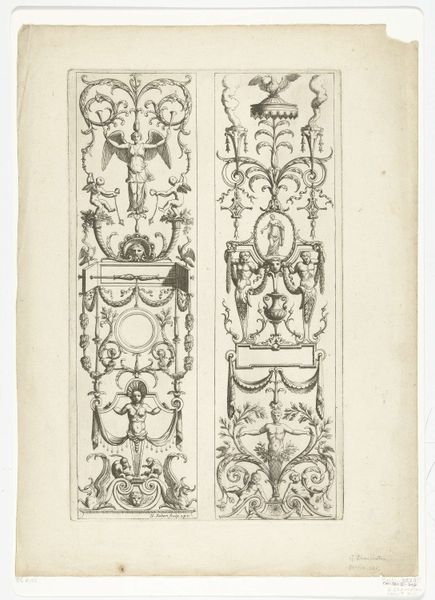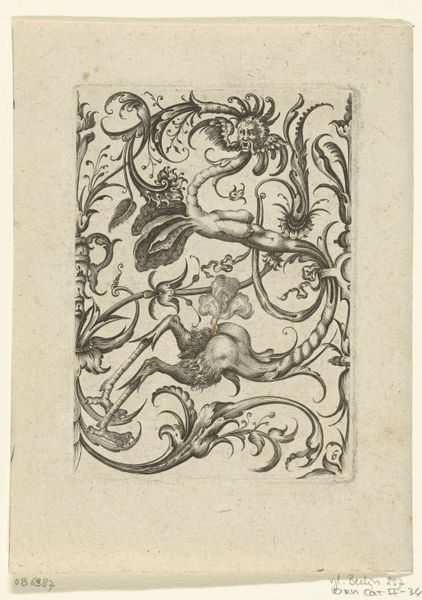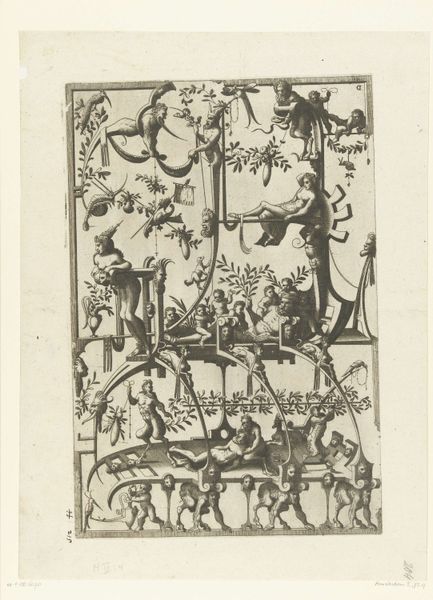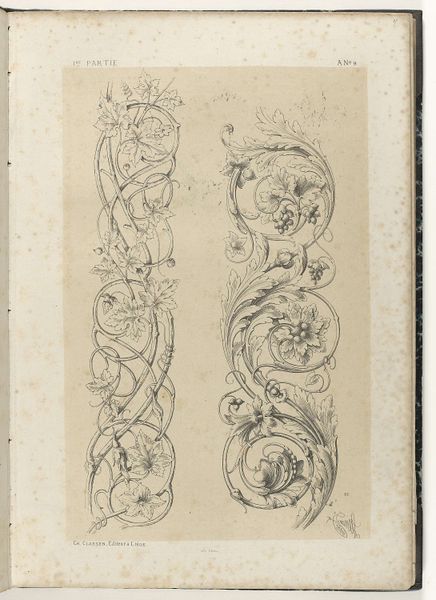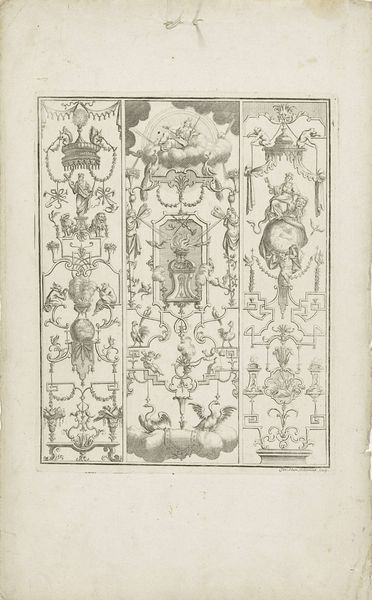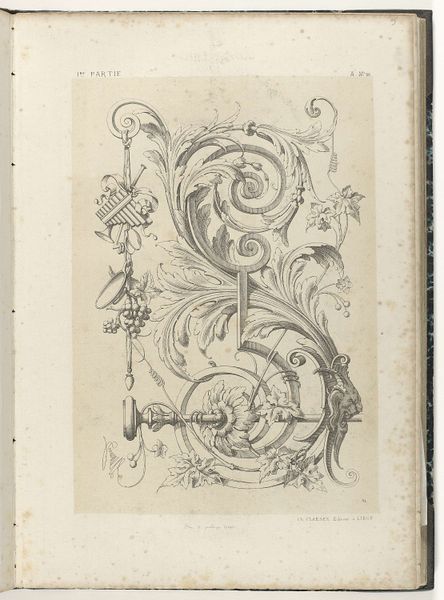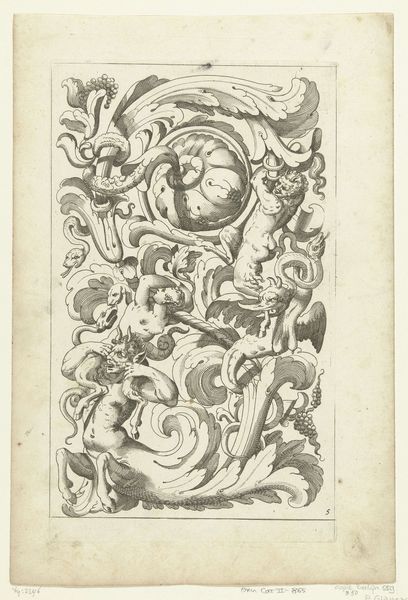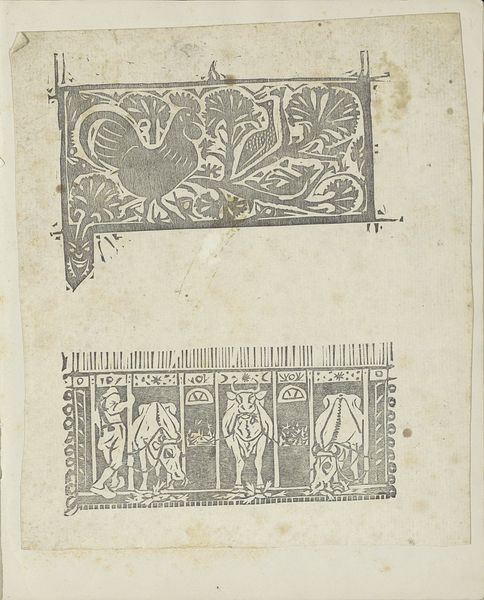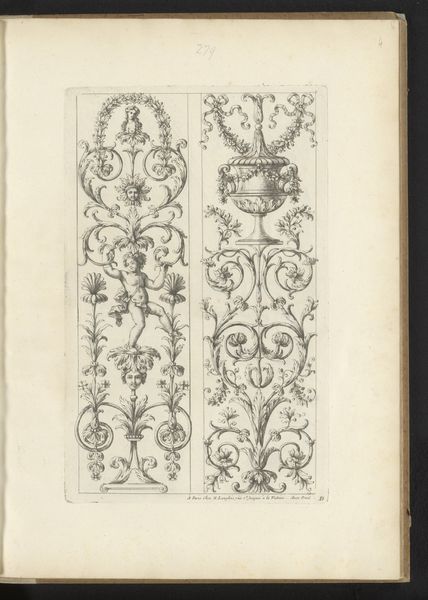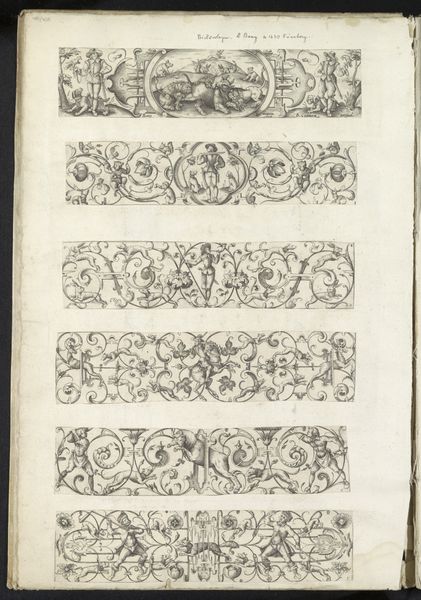
drawing, ink, engraving, architecture
#
drawing
#
baroque
#
ink
#
geometric
#
history-painting
#
engraving
#
architecture
Dimensions: height 277 mm, width 190 mm
Copyright: Rijks Museum: Open Domain
Curator: This is an engraving entitled "Twaalf helften van hermen", or "Twelve halves of herms," created around 1610 by Gabriel Kramer. The piece showcases a collection of architectural designs. Editor: Twelve halves... they're like the disassembled daydreams of a Baroque architect! I mean, there's a strange poetry to seeing them isolated like this. Curator: Indeed. It’s a fascinating look into the workshop process. These "herms"—sculptural elements featuring human figures emerging from pillars—weren't just conjured out of thin air. We’re seeing the precursor to monumental, material expressions. Consider the social context; pattern books like this disseminated designs across vast distances. Editor: So it’s like, a Baroque IKEA catalog? Except instead of Billy bookcases, we have stoic bearded men sprouting from decorative columns? I love it! There’s such a meticulousness to the engraving, you can almost feel the craftsman's hand. Curator: The medium, in fact, supports your point. The sharp lines, the fine detail only achievable through the process of engraving on metal, allowed for mass production and widespread dissemination. Notice the varying degrees of ornamentation, reflecting a developing style among craftsmen catering to both private and public spheres. Editor: That makes total sense. Looking at them now, separated and almost clinical in their presentation, you still catch these small, strange details...a winged figure, some sort of bizarre vegetal flourish... I keep wondering where these fragments might've ended up, physically speaking, in grand buildings we can still find today. Curator: Precisely. And the “halves” invite an inquiry into the original constructions. How might these have looked when realized as fully-fledged supporting members within an interior or façade? Each design signifies a particular level of wealth and intention in these civic or aristocratic spaces. Editor: I’m just imagining these bits showing up on some massive estate or church; there is something really satisfying knowing such meticulous artwork informs something much bigger. Curator: A testament to material and method—from concept to commerce to context. Editor: Totally, this artwork really pulls apart all these meanings. Now, whenever I encounter a baroque building I will imagine its birth by means of a fragmented drawing!
Comments
No comments
Be the first to comment and join the conversation on the ultimate creative platform.
